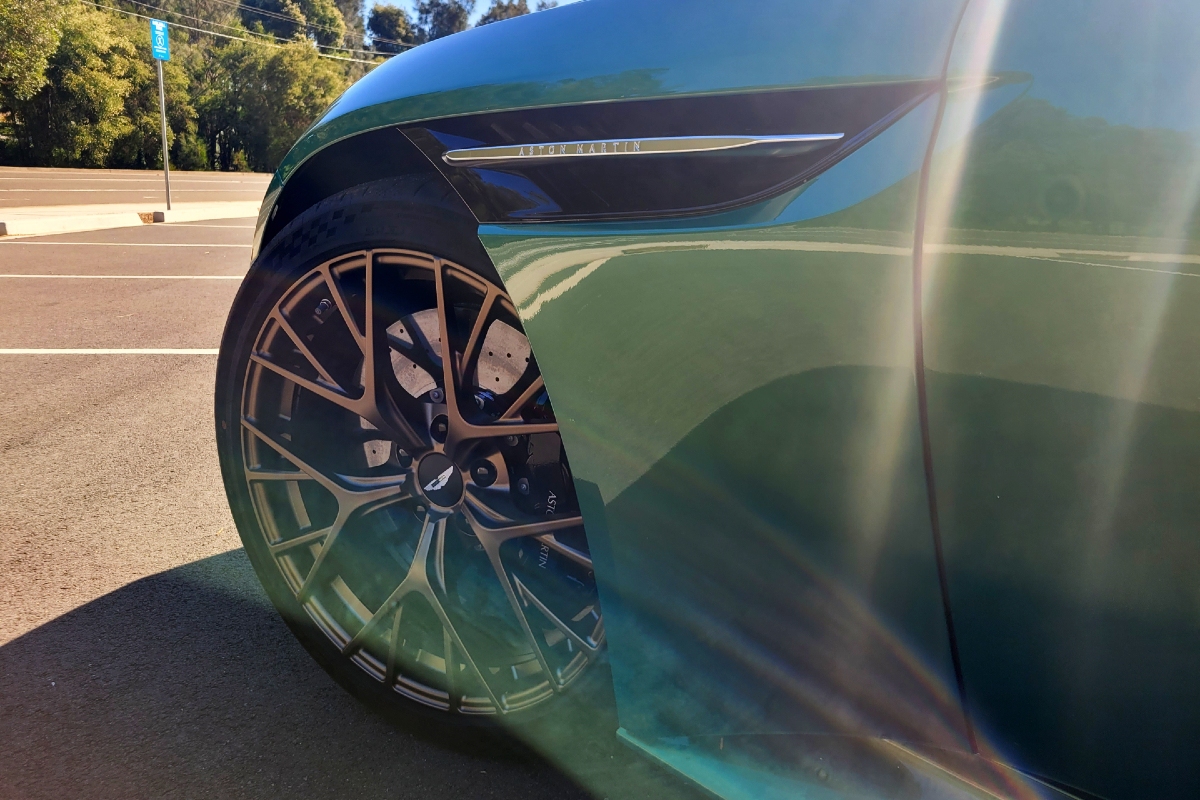
Key Formula 1 technical figures discussed the prospect of porpoising, and ways it might be mitigated, well before the start of the 2022 season.
Several teams have this year experienced aerodynamic bouncing, with the all-conquering Mercedes squad arguably the worst hit.
In Azerbaijan last weekend, George Russell argued that the situation was becoming dangerous and led calls for change.
Team-mate Lewis Hamilton suffered physically throughout the weekend, the 37-year-old clearly nursing a sore back following the race in which he finished fourth – his equal best result of the season to date.
However, not all teams experience the issue, lessening their desire to address the issue.
Similarly, they’re less inclined to work towards a solution if that might compromise their own performance, while simultaneously benefiting Mercedes.
“It’s just brutal out there, and being shaken to pieces, and can barely see where to brake at the end of the straight because we’re bouncing around so much,” complained Russell following qualifying.
“I don’t think we’re the only car, I think probably half of the grid are in the same boat, and frustratingly probably Ferrari are in the same boat, but they somehow seem to make it work.”
Earlier in the weekend, the 24-year-old had called for changes to the regulations to address the issue.
It’s a point that has been visited at least once before, with the sport’s technical figures having discussed the likelihood of the issue in late 2021, with nothing done on the matter.
Two separate but related problems are being experienced to a greater or lesser extent up and down the grid.
The first is basic porpoising, where the airflow under the car stalls, causing it to rise on its suspension before the downforce returns, compressing it once more.
It’s a process that typically manifests itself at high-speed, and can be triggered by speed and/or bumps.
Alongside that is bottoming, where the floor of the car impacts the ground.
That is exacerbated by teams looking to run their cars as low as possible to maximise the underfloor aerodynamic benefit.
“I think they are very much linked together,” observed Mercedes boss Toto Wolf.
“We are seeing tracks where we have an aero porpoising and then we have a bouncing, and then come cars bottoming.
“It’s not really clear. It’s all interlinked with the aerodynamic performance of the floor.”
There is a simple solution available which teams can employ to immediately remedy the issue: raise the ride height.
However, they’re unlikely to do that as it comes at the cost of performance as a higher car has a reduced venturi effect – the principle which generates downforce.
Ferrari’s Carlos Sainz agreed with Russell in that he feels something needs to be done to mitigate the issue.
The Maranello team has clearly suffered in a similar fashion to Mercedes throughout the season, though a key difference is the scarlet cars don’t tend to carry the issue into corners like their rivals.
“There is always a way to try to mitigate through the set-up,” said Ferrari team principal Mattia Binotto.
“This is a set of option you decide the bouncing effect.
“I think that in terms of engineering, it’s a good challenge to have.
“So I don’t think it’s a safety matter first,” he added, addressing the point raised by Russell and Sainz.
“It’s certainly something which is affecting drivers, but it’s both a technical and car set-up challenge.”
McLaren’s Andreas Seidl is more conciliatory, suggesting the drivers’ comments need to be taken seriously.
The Woking squad has been less impacted by porpoising than many of its rivals, though its German boss admits it hasn’t been immune.
“I wouldn’t necessarily say that we are the team that is suffering the least,” he said.
“If you hear Daniel’s quotes after the race [in Azerbaijan], we had quite a bit, and that’s why I think it’s important to take these comments seriously from the drivers.
“And it’s important to have a discussion in the technical advisory committee on what’s the next step.
“It’s easy to stop the porpoising, just to set up and sacrifice a bit of performance,” he added.
“But in the end, due to the competitive nature of the game you’re in obviously, you want to go to the limit [with] what’s acceptable and then also what the drivers can survive on track.
“Obviously you could go in the wrong direction, that’s why it’s very important to have this discussion.”
“That was the most painful race I’ve experienced, the toughest race I’ve experienced,” said Hamilton on Sunday afternoon in Baku.
Hamilton was slow to climb from his Mercedes in parc ferme, before gingerly walking away.
Ahead of the race, Wolff had suggested the seven-time world champion may not be able to see out the full race distance, such were the difficulties he experienced during practice.
“A lot of moments where I didn’t know if I was going to make it, one just whether I was going to keep the car on track because, I don’t know if you saw, in high speed, nearly lost it several times,” he said of his race.
“That was the battle with the car, [it] was intense.”
Formula 1 heads next to the Canadian Grand Prix, a venue which places a premium on top speed with a long back straight where porpoising is again likely to feature.
Free Practice 1 gets underway in Montreal at 04:00 AEST on Saturday.

 Shop
Shop




























